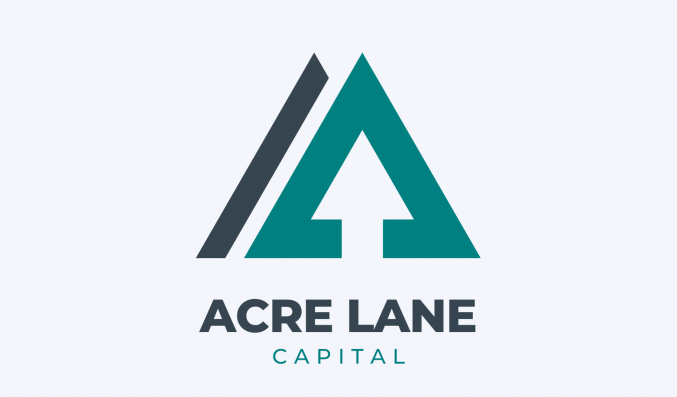Using a bridging loan to buy or mortgage a home
By Helen Jackson

According to the HomeOwners Alliance, on average, it takes sellers six months to complete their house sale. And let’s be honest, who hasn’t had a flick through Rightmove or Zoopla before it’s actually time to start looking for a new property? You’re undoubtedly going to come across your dream house time and time again, or if you’re a property developer, your next dream investment opportunity.
But you can’t move on to buying a new property until your house sale completes, right? Wrong. That’s where a property bridging loan comes into play — bridging finance can help you buy that property quicker.
Whether it’s a flat in a great rental location, a plot of land to build on or a commercial property — learn more about this type of finance below.
What is a bridging loan for home purchasing and how do they work?
What are bridging loans for homes? A bridging loan, also known as bridging finance, bridges the financial gap between selling and buying a new property. It pretty much says what it does on the tin.
You can use a bridging loan if you’re waiting for your current property to sell, but you want to secure a new property. Bridging finance means you can secure that property without issues and pay the loan back with the equity from your property sale.
Let’s say you’re buying a property at auction, but you don’t have the money right now to buy it. This kind of finance can mean property developers don’t have to pass up that opportunity to invest in an exciting project.
This type of loan can help solve a lot of your cash flow problems when growing your property portfolio.
Is a bridging loan the same as a mortgage?
We get asked this question a lot “is a bridging loan a mortgage?” And the answer is no. Repayments on your mortgage are made in monthly instalments, but with a bridging loan, you usually pay it off as a lump sum when equity is released from the property you’re selling.
So, where a mortgage can be taken out for 30 years, you’d only need this type of loan temporarily, perhaps for a few months up to 12 months.
How to use a bridging loan to buy a house
Using a bridging loan to buy a house is straightforward. You can use it to help you buy any kind of property, commercial or residential — you can even use it to secure a plot of land. Buying a home with bridging finance is quicker than waiting for a mortgage to be arranged.
The mortgage application process time varies depending on your circumstances; for example, if you’re self-employed, the lender might need more information for the application form. But, on average, a mortgage application can take between two and four weeks.
Can you use a bridging loan to buy a home and then remortgage?
Yes, you can. But you can’t remortgage until a period of time has elapsed — usually between six and 12 months. However, if you’re currently living in the property, then lenders are happier to help you remortgage. But it’s important to remember that all lenders differ. You might sign with a lender who doesn’t adhere to this period, and you can remortgage straight away.
How much do mortgage and home purchase bridging loans cost?
They’re pretty pricey. They’re certainly not the cheapest financing option — because of their short-term nature, they have high interest fees. When taking out any finance, you should always consider the total end cost of your loan options, be realistic — can you afford it?
When researching bridging finance lenders, you should consider that you’ll have to pay an arrangement or brokerage fee, which is usually around 2% but can dip as low as 1% if you’re taking out a large sum. You’ll also have to factor in legal fees, valuation fees, exit fees, and, of course, interest fees.
Some lenders bill interest monthly, deferred or retained. Check to see what interest repayments your lender offers to make sure you’re happy with it.
If you’re after a quick and easy way to work out how much bridging finance is likely to cost, try our easy to use bridging loan calculator.
Are bridging loans an option for first-time home buyers?
This type of finance is most commonly used by property developers. If you’re a new property developer looking to purchase your first buy-to-let mortgage and the property you’re interested in needs a lot of work — let’s say it’s short a bathroom and kitchen. Then bridging finance can help you secure the funds necessary to bring it to a liveable standard so you can secure a mortgage on it.
Bridging finance is perfect for smaller property development tasks, but if you’re looking for an injection of cash for a large scale project, you might want to consider development finance.
Although property developers mainly use it, this finance can be taken out by individuals or businesses. It can serve as cash to tide you over until you sell a property or until another form of finance is in place. It’s a stopgap.
But if you’re looking to complete work on your property before you move into it, you could consider a personal loan or property development finance. Make sure you research interest fees and the repayment period to make sure it’s the right product for you.
Can you use a bridging loan for property investment?
Yes, bridging finance is commonly used for property investment by property developers. This kind of finance can be used to fund small projects while another long-term finance is secured.
It’s worth noting that if you’re taking out the finance and the property you’re securing it with isn’t going to be housed by the borrower (or an immediate family member), and it’s taken out in a business name, it isn’t regulated by the Financial Conduct Authority (FCA). It’s important you’re aware of that; if things go wrong, you’ll have less protection.
Can you use a bridging loan for downsizing?
Yes, you can. You might want to sell your house in your own time, finding the right buyer for the right price. To do this (and to make a move on your new property), you can apply for a downsizing bridging loan.
This type of loan helps you move quickly to purchase your new, smaller home without putting yourself through the stress and anxiety that comes with selling and buying at the same time. It removes the worry of the chain falling through — this way, you can move into your new property and focus on selling your more expensive property in your own time.
Is a bridging loan the right choice for you?
As with every form of finance, there are pros and cons to bridging loans. That’s why it’s essential you carry out research into all financial options before making a decision.
To help you weigh up whether bridging finance is for you, here are some pros and cons to consider:
Pros
- It’s quick to arrange
- You can move on the property you want straight away
- More flexible than a traditional bank loan
Cons
- High interest rates
- Currently unregulated for business investment
- Additional fees (valuation fee, broker fee, legal fees and more)










You must be logged in to post a comment.